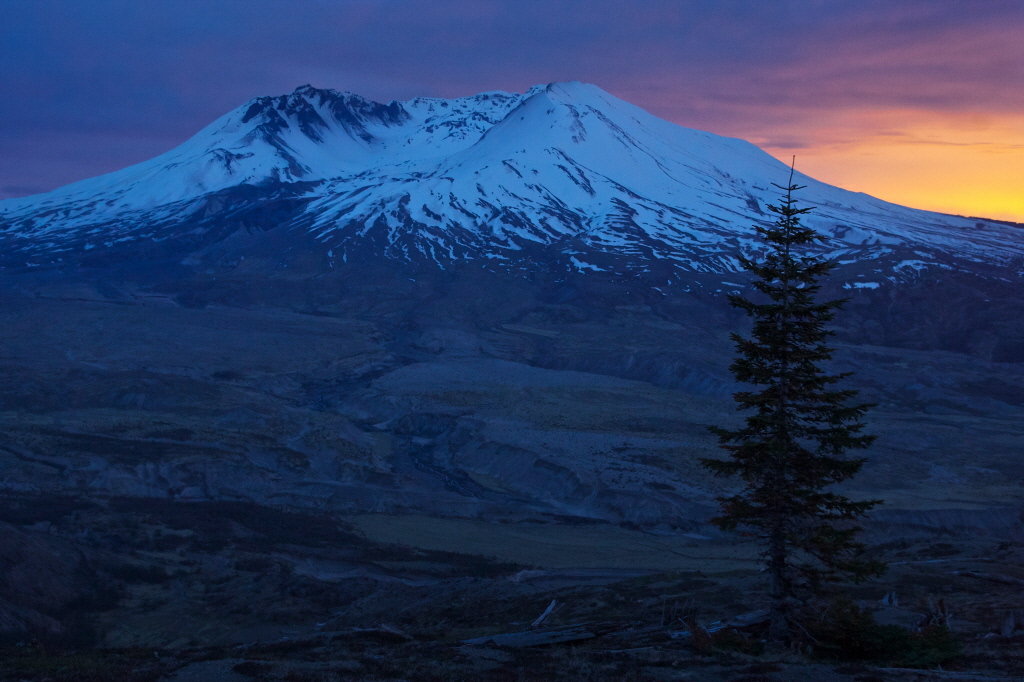
Fault line, won't you be my Valentine?
The second largest earthquake since Mount St. Helens erupted -- a magnitude 4.3 shaker -- rocked a fault line six miles north of the volcano Monday morning. People felt it as far away as Astoria, Lake Oswego, Hood River and even Bremerton, Wash., near Seattle.
The last one, as it happens, was 30 years ago also on Valentine's Day, a magnitude 5.5 temblor.
That 1981 earthquake appeared to be the result of the earth's crust readjusting after magma oozed up through the fault and blew the mountain's top on May 18, 1980.
Monday's quake was of the "strike-slip variety," said seismologist Seth Moran of the Cascades Volcano Observatory in Vancouver.
The large tectonic Juan de Fuca plate is diving beneath the North American plate. At places, the plates get stuck together. An earthquake occurs when the plates slip past each other, releasing energy, he said.
More than 900 people reported feeling the 10:35 a.m. earthquake, posting their responses on the U.S. Geologic Survey's "Did you feel it?" page on its website. No damage was reported.
"I felt it, and certainly a lot of people here felt it," Moran said. "It was broadly felt, and, for a 4.3, that's appropriate, it was a decent-sized earthquake."
Mount St. Helens has rumbled and belched and quaked nearly every day since the May 1980 eruption, averaging one to two earthquakes a day, Moran said. In late January, a swarm of earthquakes was detected in the same general area as Monday's quake, known as the Mount St. Helen's Seismic Zone.
The zone runs from Mount St. Helens 30 miles north to Morton, Wash. The largest quake in that January swarm was a modest magnitude 2.6, he said. Monday's quake, like those previous ones, occurred at a relatively shallow depth of about 3.1 miles.
The quake doesn't presage another eruption, or another round of dome-building inside the crater like the action that followed a smaller magma eruption in fall 2004, Moran said. This one was simply a result of tectonic plates clashing beneath the earth's surface along the fault.
Still, he said: "Anytime a 4.3 earthquake happens in this area, you pay attention because they're not that common. Realistically, we don't know exactly what's going to happen, but there's a reasonable guess that this was the largest event that we're going to see, and that's based on the fact that we've only had one event that's larger in the past 30 years."



This time in Indonesia.
Most important Earthquake Data:
Magnitude : 6.1
UTC time : Tuesday, February 15, 2011 at 13:33:53 UTC
Local time at epicenter : Tuesday, February 15, 2011 at 09:33:53 PM at epicenter
Depth (Hypocenter) : 20 km
Quake-maps.com satellite map + I Did Feel It form
Geo-location(s) :
Although we have no names of the villages, on satellite pictures we can clearly see a number of settlements on the shores of Lake Matano and no more than 10 km from the epicenter (if the epicenter location is confirmed after recalculation).
There was also a moderate 5.5 near Tiawan, so lots of activity on the ring of fire at the moment.
[Link]255 km (158 miles) SE (133°) from Palu, Sulawesi, Indonesia